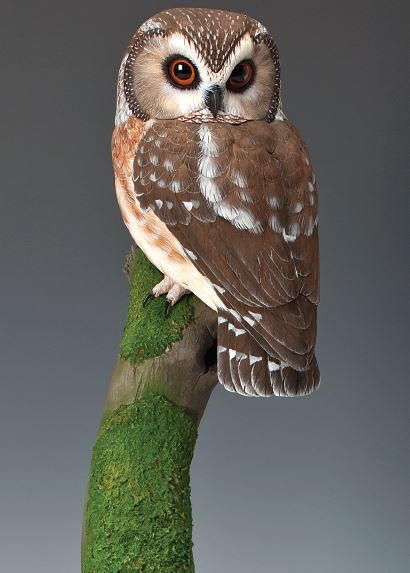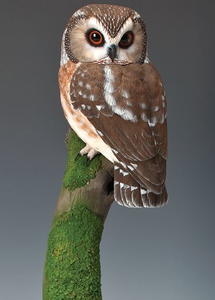Saw-whet Owl, Part Two
The bird is carved and textured. Who's ready to paint?

Before starting to paint, you need to seal your carving. After working with several different sealers over the years, I have settled on Deft Sanding Sealer. It is a fast-drying sealer with no wax, so it will give you a clean surface that will almost grab the paint. This means you don't need a coat of gesso.
After you seal the bird, it's ready for painting. I paint strictly with acrylics. The brands I use vary, but for this project, I will use Chroma Airbrush Colors. The colors I used are chestnut, warm white, titanium white, driftwood, ebony, nutmeg, burnt sienna, and raw sienna. On this project, I used the #1 Vermont Raptor Academy brush, a one-half inch oval wash brush, and an airbrush.
It is very important to have good reference material when painting. Any time you can get hold of a mounted bird or study skins, you are way ahead of the game. At the very least get your hands on as many high-quality photographs as you can. You can find them by doing a Google search on the web and then picking from the thousands of photos available. You can also find some reference photos in the Fall 1994 issue of Wildfowl Carving Magazine.
This article is from the Spring 2011 issue. For more information on our issues, check out our issues page.
Al Jordan's owl appeared on the cover of the Winter 2011 issue.



